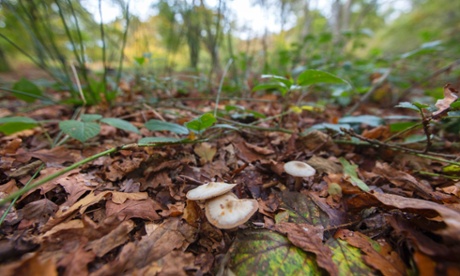Gangs commercially picking edible fungi to sell to restaurants and markets are leaving a ‘trail of destruction’ across ancient woodlands, such as Epping and New Forest
 “Here we go – this is one of the really nasty ones,” says Jeremy Dagley, pointing at the cappuccino-coloured cap of a two-inch mushroom nestled in the coppery leaf litter in Epping Forest. “The brown roll rim will kill you and it is not a slow death.”
“Here we go – this is one of the really nasty ones,” says Jeremy Dagley, pointing at the cappuccino-coloured cap of a two-inch mushroom nestled in the coppery leaf litter in Epping Forest. “The brown roll rim will kill you and it is not a slow death.”
But a few steps further on he discovers a mushroom the size and shape of a toasted tea cake. “This is a penny bun - also called a cep - and it’s really edible,” he says. “It is the one the pickers love. They are really expensive and really lovely to eat.”
Epping Forest, an ancient woodland straddling the border of greater London and Essex, is one of the best fungi sites in the country, with over 1,600 different species. But, like other fungi-rich sites such as the New Forest, it is being stripped out by illegal picking by gangs believed to sell the wild mushrooms to restaurants and markets.
“They leave a trail of destruction,” says Dagley, who has been head of conservation for 20 years at the 6,000 acres wood. “It has stepped up over the last five years. Sometimes people run away when they are challenged, but we have been threatened too. People pick using knives so they feel armed.”
He says pickers often take everything away and sort the edible from the poisonous later: “You can find people with 40kg of fungi, which is huge” but much is just thrown away.
Dagley says it is distressing to see the destruction, and it prevents the forest’s 4.5 million annual visitors enjoying the spectacular variety of fungi. The weird and wonderful shapes and colours of the fungi he points out revives his enthusiasm. “You have gills, frills and pores and the puffballs, they are like things from outer space,” he says.























